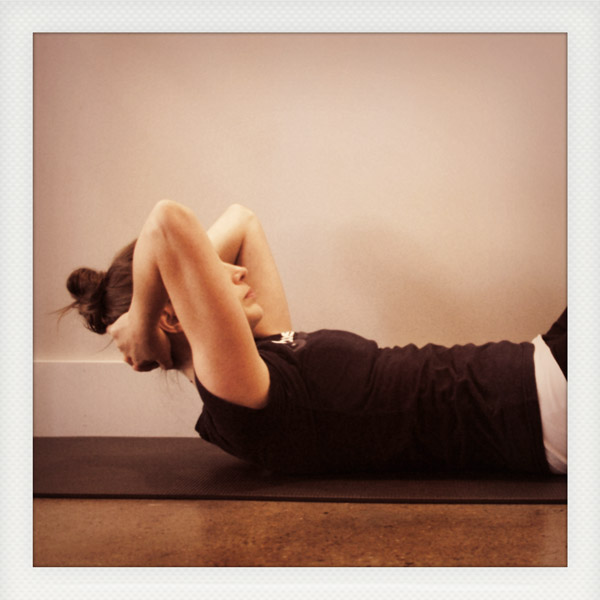 When I first start working with someone new to the studio, I frequently find that they really want to tuck their pelvis during various Pilates exercises.
When I first start working with someone new to the studio, I frequently find that they really want to tuck their pelvis during various Pilates exercises.
What's more, some people's bodies actually remain in a tucked-pelvis position throughout their lives, whether they are standing, sitting, or lying down. It's what they've become accustomed to and what feels normal.
If you're used to tucking your pelvis when you exercise, the idea of not tucking may be confusing and feel foreign because somewhere down the line you were probably taught to keep your pelvis tucked. The reasons you might have been given to tuck may be many: to protect your neck, to protect your back, or even to optimize the focus on the working muscle groups, etc.
However, as I’ll demonstrate, these and other reasons are actually mostly mythical and I’d like to offer a few much better reasons to avoid tucking your pelvis.
Traditional abdominal training, and even some schools of Pilates, still teach people to tuck the pelvis. You might be amazed to know that even Joseph Pilates may have taught people to tuck the pelvis in order to flatten out the back because he believed that “…the spine should be flat like a newly-born infant even throughout adult life.” (Pilates, Return to Life pg. 27)
[pullquote_right]I've never once heard anyone say “My goal is to get my ribs closer to my hips”, “I'd like a shorter waist please”, or “I'd like my pelvis tilted towards my face.” Quite the contrary, the overall goal I hear is better posture, a longer torso and leaner waist and a body that moves with ease. All these goals are achieved by working and strengthening the body while in a lengthened state and not tucking the pelvis.[/pullquote_right]
But Joseph Pilates didn't have access to the extraordinary new knowledge of the body that we have today. I like to think that if he had learned what we know, he would have modified his approach to accommodate the constantly increasing knowledge of anatomy.
We now know that the natural curves in our spines are there for a reason. They help absorb the compressive forces we meet through living a life in an upright position under the pull of gravity. Our spinal curves serve as natural shock absorbers.
Interestingly enough, a baby's back is flat, but only until the baby starts crawling. When a baby begins the transition to living in an upright world through lifting its head, crawling and walking, its little spine begins to develop the lumbar, cervical and thoracic curves.
Originally, I was taught that tucking the pelvis and flattening the spine into the floor was a bad idea because it created spinal compression on the anterior (front) side of the spine. And for a time, I feared that the slightest tuck of a person's pelvis could compress their spine and send a disc bulging right out.
What I've learned since is that the lumbar curve is more resilient than that. Even if you tuck your pelvis and press your low back into the mat, your spine isn't completely straight, or completely flattened out. Part of your lumbar curve remains and protects you from damaging compression. (However, if you have an existing bulging disc in the spine, tucking the pelvis could exacerbate the issue.)
So, if spinal compression isn't the main reason you don't want to tuck the pelvis, as I once thought, what’s the problem with tucking the pelvis?
1. Over-Stretching the Ligaments of the Sacroiliac Joint
When you tuck the pelvis to lift the head, neck and shoulders off the floor, or to lift the hips off of the floor, chances are you've squeezed your glutes together to make it happen.
Squeezing the glutes together squeezes the sitting bones (ischiums) together, which makes the pelvic bones (iliums) spread at the top, and this results in a strain or over-stretch on the ligaments of the sacroiliac (SI) joint.
If you look at the picture, you can see that you have 2 pelvic bones that are joined by the sacrum. The top of the pelvic bones are called the iliums. The bottom of the pelvic bones are called the ischiums.
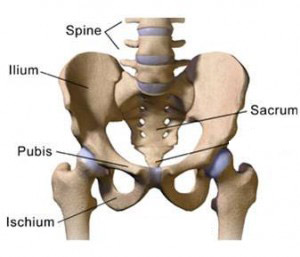
If you squeeze the 2 ischiums together, it will cause the 2 iliums to be pulled away from the sacrum at the top creating a strain on the ligaments that hold the sacrum in place.
This might not hurt right away, but chronic use of this maneuver over time is likely to create pain in the SI joint itself, or even the low back.
For exercises that require glute activation, such as a bridge, you want the glutes to activate, but squeezing the glutes together and activating the glutes are two very different actions.
2. Lost Transverse Abdominis Engagement
If you're squeezing your glutes to tuck your pelvis, you're not going to be able to access your transverse abdominis (TA) muscle, which is the deepest layer of abdominal muscle and the muscle you want to connect and activate first in Pilates.
Squeezing your glutes and tucking your pelvis is, in fact, completely backwards. The glutes are external muscles and activating them first actually works against the goal of strengthening the core and flattening your abs.
The core muscles are the deepest muscles in the body and are closest to the bones. If muscles were runners, the core musculature would be your marathon runners. These are your postural muscles and they are in it for the long haul to support you throughout the day. When doing Pilates, you want to connect to and activate these core muscles first and work outward from there.
Your more exterior muscles (glutes, quads, 6-pack) are your sprinters. They carry you from point A to point B when you are walking, dancing or running. You totally need them, of course, but they are not designed to sprint non-stop all the time.
Underneath the exterior muscles, your deepest core muscles are working as a support system so the exterior muscles can work more efficiently. Because of this support system, when everything is in working order, you will have more power and stability behind every single move you make.
This support system will also help you age more gracefully and with better balance and the transverse abdominis (TA) is a vital key to developing and strengthening your core muscle support system.
Tucking the pelvis for an exercise prevents the TA connection from happening because, in order to tuck, not only are you squeezing your glutes, but you have to invite the hip flexors to the party too. Chances are, the hip flexors are going to bring their friends the obliques along. With all these external muscles activating first, you’ve got an external muscle ruckus going on and the TA doesn't stand a chance. It's more likely to remain unactivated and you’ll miss the opportunity to build your core strength.
3. Are You Creating a Short Compressed Body with Poor Posture?
Or are you creating a long, decompressed and relaxed body with beautiful posture?
Think about the type of body you want to create. Pilates is famous for the long, lean bodies it creates. The reason? Every single move you make in Pilates is designed to focus internally on the core to create length in your spine.
Whether you’re building strength or flexibility, it doesn’t matter, the method you use to strengthen and stretch your body is ultimately what it will become.
If you strengthen your body in a shortened and compressed state, your results will be short and compressed. Shortened and compressed equates to tighter and less mobile.
If you work and strengthen your body with length, your results will be long and decompressed. Long and decompressed equates to length, flexibility and greater mobility.
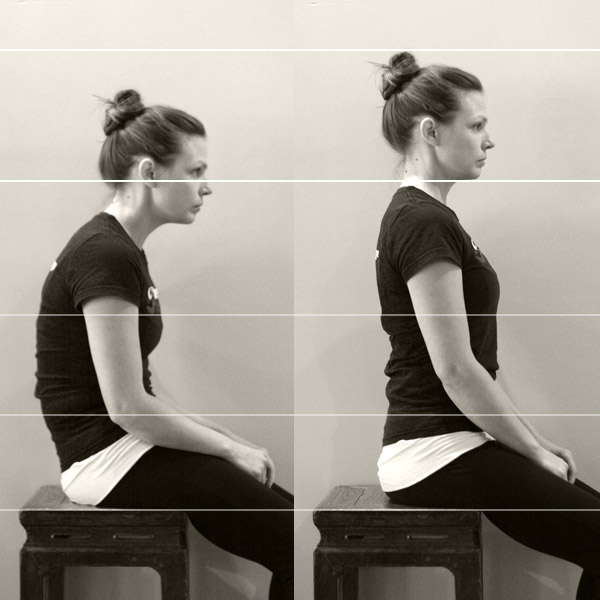
Take a look at the crunch, or sit-up.
First, consider the abdominal-crunch with a tucked pelvis. Look at the space between the ribs and the hips.

Now take a look at the crunch with a neutral pelvis. Look at the space between the ribs and the hips.
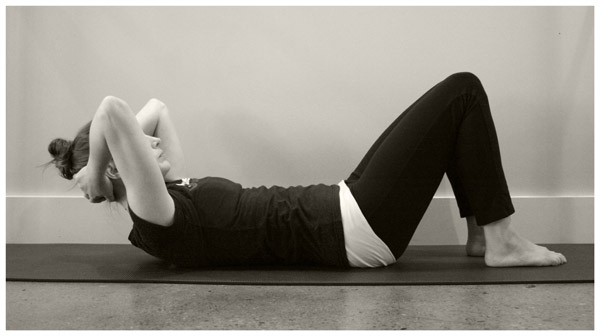
If you were to take these photos and turn them so that they are in an upright position it gives you an even clearer idea of what you are creating in the body when you tuck and compress versus maintaining length.
In the photo below, note the alignment of the heels remains the same and you'll more easily be able to see the huge difference in length that occurs when you don't tuck your pelvis and instead engage the TA.

I've never once heard anyone say “My goal is to get my ribs closer to my hips”, “I'd like a shorter waist please”, or “I'd like my pelvis tilted towards my face.” Quite the contrary, the overall goal I hear is better posture, a longer torso and leaner waist and a body that moves with ease. All these goals are achieved by working and strengthening the body while in a lengthened state and not tucking the pelvis.
If you're used to working with a tucked pelvis, or you feel like your workouts are currently done in a compressed state, Pilates feels very different at first. Having the work come from the inside out and working in a state of lengthened awareness feels completely different from working on the exterior muscles and compressing things.
And the beauty of Pilates and this lengthened workout is that it translates into every other part of your life.
In every physical activity you participate in, whether it's dance, football, hairstyling, running, Crossfit, yoga or swimming, these principles go underneath it all to give your body the length, stability and efficiency that helps you excel in everything you do.
All you have to be is willing and open to feeling this difference in your body. This is the first, most important step.
The best thing I can hear someone say after they've completed a session is “I feel taller”. This is my favorite side effect of Pilates!
Now that we know why tucking the pelvis isn't an efficient, or safe way to strengthen and lengthen the body, stay tuned for my next post where I’ll talk about the antidote to a tucked pelvis. I'll share with you exactly what a neutral pelvis is, why you want one and how to do it perfectly all the time.
See you in the studio,
Sydney



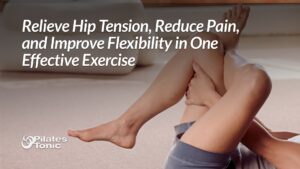
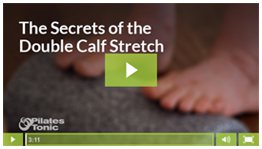




26 Responses
It must be working for me, because Larry says I need to stop growing ~ I’m taller than him now!
That’s awesome Jenny! I love it!!
Hello, I thought if the pelvis is not tucked, that it then creates a swayed back. The problem I am trying to target is pulling in my femurs back into their sockets – I have very wide hips for someone my stature and learned that when the glutes and other muscles surrounding the pelvis are weakened and flabby, that the ball of the femurs become loosened, hence causing “saddlebags”. It’s ugly and I don’t really have any fat to lose on them, so they look funny when you see my slimmer hips but then going further down, my trochanters stick out, creating an unsightly mess.
Additionally, I have (genetically?) large calves and would like to get some advice and tips on what I can do to NOT let them get any bigger. I have tried to come to terms with the fact that they will always be big, unless how I am walking is contributing to them but I don’t know. Aside from my lower body, I am pretty top skinny, not a good combination. Plus, my legs seem a little short for the rest of my body so I’m not too eager to stretch out my spine to make myself look taller.
Whatever advice you can offer, I’d appreciate it ! Thank you.
Hi, Sophie,
Tucking the pelvis to prevent a sway back may stop the back from “swaying” off the mat at the moment of the exercise, but it won’t begin to strengthen healthy alignment into the body. When the pelvis is tucked to prevent a sway back, the exterior or global muscles are engaged and forcing alignment into the body.
To effectively begin to correct a sway back, you want to work from the deepest muscles in the body first and support the alignment your looking for by filling in the space between the back and the floor. Also effectively stretching the hip flexors is a good idea.
This post goes much more in depth about correcting alignment without tucking if you’d like to read more.
Regarding your femurs in the sockets, strengthening the muscles that surround the pelvis and hold the leg in the socket is important for hip stability and creating well balanced muscles in the legs and pelvis. The psoas and glutes are good places to start, but you want to ensure that you strengthen the the leg in all ranges of motion.
It is possible for the glutes to become inactive for different reasons, a big one is foot and ankle alignment. If your glutes have become inactive due to poor foot and ankle alignment, you may be walking from your hamstrings, low back and calves. This can certainly create a situation where the calves become bigger.
Sydney, thank you so much for taking the time to respond thoughtfully to my situation. It’s probably a good idea for me to take a private Pilates session in my local area to get a comprehensive assessment since I’m not sure I can confidently find my neutral spine on my own. I definitely have always (unknowingly) locked my knees, when walking or standing, hyperextending and only now am trying to keep them slightly bent. My hamstrings are always sore at the end of the day and my calves definitely look wider throughout the day than they do when I first wake up in the morning. I am almost 37 and I have not worn shorts or dresses since I was 18 due to the fact that I was embarrassed about my legs. The inner area where the ankle joins the lower leg have always looked crooked to me and I suspect that my tibias are a bit curved where it joins the ankles, creating this appearance of a curve, where I normally see it straight on others’.
Do you also have an article on the proper walking form? I am confused on what is the proper way to walk – let the heel strike the ground first, then roll forward to the ball or try to land flat on my foot each time?
Sorry that I have written a story here but it’s so difficult to find good sources of help on this on the internet and even more difficult to find someone who knows what they are talking about ! But please don’t feel obligated to reply further, I already appreciate the starting point you have so kindly provided. : – )
You are welcome Sophie! I think it’s a great idea to take a private session locally. I don’t currently have a post out about walking form. But, it is something I’m passionate about and may include in a future post or video. If you go to the home page of Pilatestonic.com, you can sign up to receive my email updates. That way you will be first to know when new blog posts and videos come out.
All the best and keep me posted on your progress. 🙂
Thanks the article Sydney.
Very informative & straight forward!!!
Thanks for your feedback Maite! I’m glad you enjoyed the article. I’m looking forward to meeting you 🙂
You wrote, that kids have almost straight spine, just because their spines are “underdeveloped”, but in non-industrialized societies many people still have the same straight spine in their adult life, as Esther Gokhale found out. How can you explain this ?
Hi PB, I’m a bit confused by your comment because I don’t mention in this post “that kids have an almost straight spine” or use the term “underdeveloped” to describe a child’s spine. I do mention that babies are born with backs that are flat and that their cervical, lumbar and thoracic curves develop in response to gravity. Esther Gokhale is fantastic! From what I know of her work she has a similar philosophy with regards to the pelvis’s relationship to the spinal curves. Thanks for your comment.
hi sydney.. is it alright to tuck pelvic during a barre workout ???
Hi Mishie, I’ve never taken a barre class before, but if it involves repetitive tucking of the pelvis, and/or squeezing the glutes together that could contribute to an SI joint or spinal issue.
Thanks for your question!
Hi Sydney,
I’m one of those people who have developed the habit of tucking my pelvis in daily life. Do you have any suggestions for specific exercises to strengthen whatever I need to strengthen to stop doing it? I’ve tried sheer willpower, but I always go back to my horrible tucking posture. Thanks for any insight!
Hi Gina, Awareness of your tucking habit is the first and most important step. So congratulations, that’s awesome!! Correcting the habit is a re-training process and takes time. Catching yourself tucking during your daily activities and releasing the tuck when you catch it is key. This can be an “over and over again” process in the beginning. I’ve got some videos coming up in the next couple months that share some exercises to help you find more optimal pelvic alignment, but in the meantime, you might find this video helpful. Thanks for your question!
hey.
what could be the alternative for tucking under during plies ? how to activate the glute muscles when doing plies?
Hi Mishie, Although a plié appears simple, it’s quite a complex exercise that requires mobility in the hips, knees, ankles and feet. Ideally during a plié your pelvis remains fluid and in a neutral position as you you lower and rise. Getting familiar with your ideal alignment and practicing squats first will help set you up for success with your pliés. You might find this post by Katy Bowman helpful.
hey sydney,
with out the tucking under i dont feel my glutes so how do we activate our glutes without squeezing or tucking under ???
Hi Mishie, the alignment of your feet, femurs and pelvis all play vital roles when it comes to glute activation. Your hip flexors do as well, because if they are too tight and short they prevent your leg from going behind your body and stop your glutes from activating. Your question is fantastic and one I’m planning to go into more detail around in a future post. Thank you!
Thank you for your reply sdyney.
It might be a while before you post regarding the activation of hips so can you plz give some tips of glute activation so i can incorporate in my workouts ?
I would stretch your hip flexors and start working on your alignment in a squat.
Here’s a few tips:
1. Make sure your feet are hip distance apart and pointed forward, not turned out.
2. Only go as low as you can while maintaining your lumbar curve.
It helps to use a mirror, and you probably won’t go too low at first.
3. Only go as low as you can maintaining your knees over your ankles and not in front of your ankles. It helps to have something to hold onto, like a doorframe.
4. When you stand up, press the floor away as you stand and don’t tuck your pelvis.
I’d also recommend the exercises in the post from Katy Bowman that I mentioned above in your previous comment. Hope this helps!
This article has been so helpful for me! Thank you Sydney! I was a barre instructor for 2 yrs and I injured my low back pretty bad from all the tucking! I never had any back problems before:( now I’m working to undo what’s been done. If there’s any advice I can give to anyone please do not tuck your pelvis, especially in the barre exercises! I was fine and then all a sudden it hit me.
Thanks so much for sharing April! I’m so glad the article was helpful and I appreciate your feedback!
I slouch so much that sitting up straight makes my back hurt worst than slouching does.
Hi Paul, The body adapts to how we use it the most, so I can see how sitting up straight would be more uncomfortable if you’ve adapted to slouching. Thanks for your comment!
Is there any research to back any of these claims up in this article? Or are you going on your own expeirexpe of working?
Hi Micheal, The answer to your question is both! Here’s a reference article you might find helpful. Thanks for your questions!
KEY, J., ‘THE CORE’: UNDERSTANDING IT, AND RETRAINING ITS DYSFUNCTION, JOURNAL OF BODYWORK & MOVEMENT THERAPIES (2013),http://DX.DOI.ORG/10.1016/J.JBMT.2013.03.012